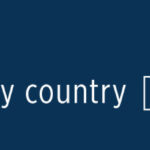Navigating airport security efficiently is a crucial part of modern travel, and understanding the Transportation Security Administration’s (TSA) rules regarding liquids is key to a smoother experience. Specifically, knowing the regulations around Tsa Travel Size Liquids can save you time and stress at the checkpoint. This guide will clearly outline everything you need to know about packing your liquids, aerosols, gels, creams, and pastes in your carry-on baggage according to TSA guidelines.
Decoding the TSA 3-1-1 Liquids Rule
The core of the TSA’s carry-on liquids policy is often referred to as the “3-1-1 rule”. Familiarizing yourself with this rule is the first step to compliant packing:
- 3.4-ounce (100ml) Container Limit: The most important aspect is that each individual container holding a liquid, gel, aerosol, cream, or paste must not exceed 3.4 ounces (100 milliliters). This is about the size of the container itself, not just the amount of liquid inside. Even partially full containers larger than 3.4 ounces are prohibited.
- 1 Quart-Sized Bag: All of these 3.4-ounce or smaller containers must then be placed together in a single quart-sized, clear plastic zip-top bag. A common kitchen zip-top bag works perfectly for this purpose.
- 1 Bag Per Passenger: Each traveler is limited to just one quart-sized bag for their liquids.
Adhering to this 3-1-1 rule ensures that TSA officers can quickly and effectively screen your liquids, helping to expedite the security process for everyone. Properly preparing your tsa travel size liquids in this manner is a simple yet significant step in ensuring a smoother journey through airport security.
Exceptions to the TSA Liquids Rule
While the 3-1-1 rule is the standard for tsa travel size liquids, there are specific exceptions to be aware of, which can be particularly helpful for certain travelers:
- Duty-Free Purchases on International Flights: Passengers arriving in the United States on international flights with a connecting flight might be permitted to carry duty-free liquids exceeding 3.4 ounces. These are allowed under specific conditions: the liquids must be purchased internationally, be packaged in a secure, tamper-evident bag by the retailer, show no signs of tampering, and be accompanied by the original receipt dated within the last 48 hours. It’s important to note that even these sealed bags may be subject to additional screening, and if an item alarms or cannot be cleared, it will not be allowed in your carry-on. For convenience, packing larger duty-free liquids in checked baggage is still advisable when possible.
- Medically Necessary Liquids and Baby Formula: Essential liquids like prescription and over-the-counter medications, baby formula, and breast milk are typically exempt from the 3.4-ounce restriction, provided they are in reasonable quantities for the journey. It is recommended to declare these items to TSA officers at the security checkpoint for separate inspection.
Practical Tips for Packing Travel Size Liquids
Optimizing your packing of tsa travel size liquids not only streamlines the security process but also enhances your overall travel experience. Consider these practical tips:
- Invest in Reusable Travel Bottles: Purchasing a set of reusable travel-size bottles is a smart investment. These allow you to decant your favorite toiletries into compliant containers, which is both cost-effective and more environmentally friendly than buying pre-packaged travel sizes.
- Plan Your Carry-On Liquids Strategically: Before you pack, carefully consider which liquid items are truly essential to have in your carry-on. Items that can be easily purchased at your destination or are not needed during your flight should be packed in checked baggage to maximize space and convenience.
- Ensure Easy Access at Security: Pack your quart-sized bag of tsa travel size liquids in an easily accessible pocket of your carry-on bag. This allows you to quickly remove it for screening at the checkpoint, preventing delays and keeping the security line moving efficiently.
- Explore Solid Toiletries as Alternatives: Where possible, consider switching to solid alternatives for your toiletries. Bar soaps, shampoo bars, solid conditioners, and deodorant sticks do not fall under the TSA liquids rule, freeing up valuable space in your liquids bag and simplifying your packing process.
Conclusion
Understanding and adhering to the TSA guidelines for tsa travel size liquids is a fundamental aspect of preparing for air travel. By mastering the 3-1-1 rule, knowing the exceptions, and employing smart packing strategies, you can confidently navigate airport security, reduce stress, and begin your journey with greater ease. For the most current and comprehensive information, it’s always recommended to consult the official TSA website before your travel date, as regulations can be updated.

